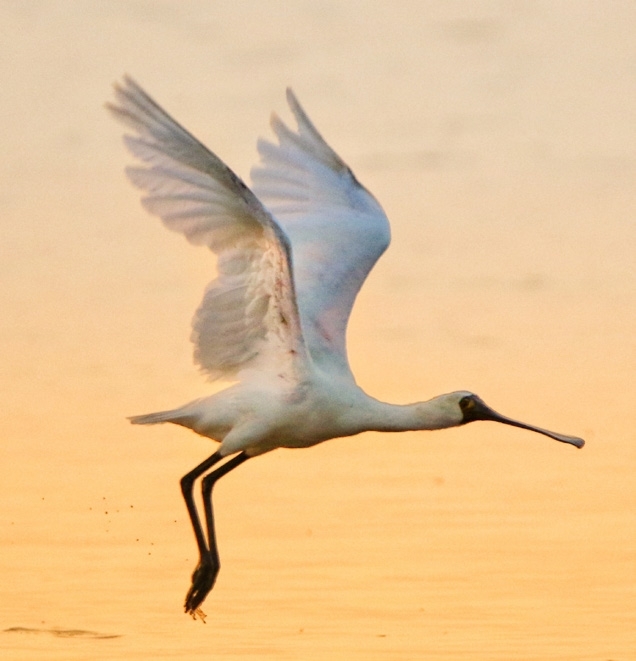
Winter is coming, boding the beginning of the great migration. Dozens of species are coming; one is very special for our city: the black-faced spoonbill (Platalea minor). This particular species represents everything we have done wrong to the environment. It appears on the red list of endangered species and if we don’t act soon, we will probably never see them again. Still having them in Shenzhen’s bay area is a privilege that we should not take for granted. The bird has a small yellow patch below the eyes on an otherwise entirely black face. Its long flat spoon-shaped beak explains its name. The body is covered by a beautiful white plumage, with perfectly positioned black tips on the wings that match their black legs. During the breeding season, some of its feathers will turn yellowish around the neck and on the back of the head, giving them an attractive look. These fabulous birds are fairly big, measuring a bit less than 80 cm tall and with an incredible 1.1-meter wingspan. Their legs and their necks are also long. They use their long bills as paddles to wade with a constant crisscrossing motion over shallow coastal regions as they look for small fish and shrimps to eat. Spoonbills breed between May and July over some small islands near the Korean Peninsula. They nest in colonies and lay two or three eggs per clutch. Facing the threat of habitat loss for many years, the species has been hit with a dramatic decrease in population. They migrate southwards during winter where we can see them in our city. It is our duty to take care of all living creatures and to protect coastal areas. We need to take action to preserve not only this beautiful bird, but many others that come to an annual visit. Let’s make our city a sanctuary for all species, for us and for our future generations. | 
